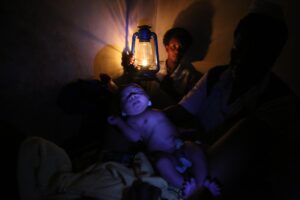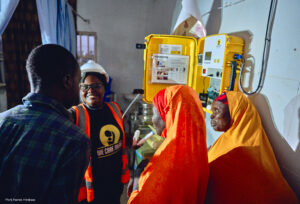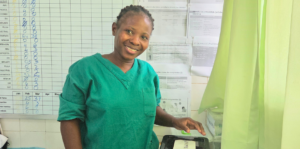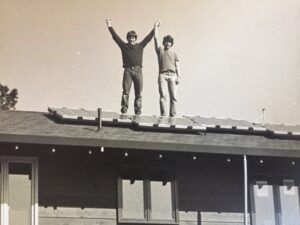
By Hal Aronson
As the Santa Cruz fires close in on my family’s home in Bonny Doon, the house that I built in the 1980s, a home powered solely by solar electricity since 1983, I grieve for the path not taken.
Ever since my brother and I built the first legally permitted solar electric home in Santa Cruz County in the early 1980s, I have been inspired by the elegance and potential of photovoltaic technology. My love of solar power inspired me to shift my work from academic sociology to the creation of solar energy education programs: to promote solar energy and inspire the next generation to build a green energy future. It was my work in solar education, and my marriage to Laura Stachel, that put me in the right place to co-found We Care Solar.
In 1980, solar and wind were already proven technologies for carbon-free electricity generation. What if, instead of removing the solar panels from the White House and cutting the budget for solar energy development, we had instead challenged our best engineers and manufacturers to bring solar to scale in 10 years? What if the US had made conversion to clean energy the equivalent of the Apollo Moon Shot? In 1960, President Kennedy set the challenge of landing on the moon before the American people and, by 1969, Neil Armstrong took the first step on the moon. What if we had challenged ourselves in the same way for clean energy? Where would we have been in 1990? Where would we be now?
Because we did not break away from fossil fuels in time, the livability of the planet is in peril. Just this year, cyclones in Zimbabwe, floods in South Asia, drought in East Africa, crop failures in Central America, a deadly heat wave in India, a freak storm in Iowa, sea level rise, and massive dislocations of people illustrate the price we are paying for decades of delayed action. Climate change has arrived and it will get worse. It is imperative that we do the work to slow its advance and mitigate its effects. We are 30 years behind where we could have, and should have, been. (1980 plus 10 years of rapid development of solar panel production technology). So now, it is time for “all hands on deck.”
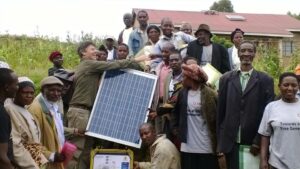
In spite of years of neglect, solar power has emerged as the affordable, rapidly deployable, reliable, scalable solution to generating electricity without releasing carbon into the atmosphere. At the moment, solar plays only a small part in the total electricity mix, but it has the potential to be the major generator of electricity for the planet. It is relatively easy to scale up; small residential systems can be installed in one day; medium-sized school systems and large utility scale solar power systems can be installed in months. Once installed no fuel is needed, no pollution and minimal maintenance for 25-40 years! Although storage is often cited as a problem, the storage issue should not be held up as an argument against solar. It should be dealt with as a design/engineering challenge. So many great solutions have been developed and/or are developing: smart grid, EV to grid technology, batteries, ice, green hydrogen, hydro storage, to name a few.
Yes, solar power is not the only carbon free generator of electricity. Wind, geothermal, biomass, green hydrogen, possibly nuclear (if it can be done safely) also have important roles to play in order to create a reliable hybrid grid. We are not advocating that Solar Electricity be the only carbon free source for generating electricity. Solar is the focus of We Share Solar. It is what we know. It is what we do. It is what we teach.
Today, near me, California is burning. CalFire is unable to contain the fires because the ground is so dry, the temperatures are so high, and firefighting resources are stretched way beyond their capacity. The fires are getting worse each year. I see no end in sight. As I write this, forests that I love are burning. It is likely that the home I built for my family in the 1980s — my first solar powered home, the place I got married, the home I hope to live in when I retire and pass on to my children and nieces — will burn to the ground today or tomorrow. My home is under threat. I am not in the mood to be impartial as to how electricity is generated.
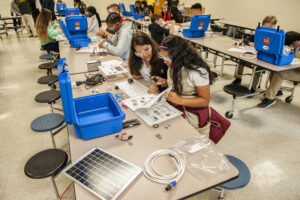
It would be a huge disservice (criminal) to our students and children to suggest that there is nothing to be done, that continued over reliance on fossil fuels is acceptable. My purpose, and the purpose of We Share Solar, is to give the current generation some hope that they can be part of creating a more environmentally sustainable world. Our purpose is to turn their despair about climate change into agency; turn futility into empowerment. We inspire the next generation by sharing our knowledge of solar power, the energy source that brought the Earth to life billions of years ago and the source that will continue to power life on Earth for billions of years to come.




